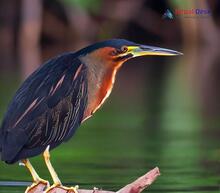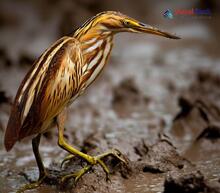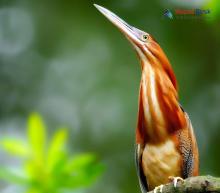Tucked away in the stunning landscapes of Nepal is a wide variety of wildlife that never ceases to amaze nature lovers and bird enthusiasts. One particularly intriguing species belongs to the Ixobrychus genus, a secretive group of birds that contribute to the rich biodiversity of this South Asian country. Here, we will explore the captivating world of Ixobrychus, delving into their peculiar traits and how they play a role in Nepal's dynamic ecosystem.
A Peek into the World of Ixobrychus
Ixobrychus is a bird genus that belongs to the heron family, Ardeidae. These extraordinary creatures are defined by their small size, covert behavior, and impressive plumage patterns. The members of this genus are often referred to as "bitterns" and are well-known for their unobtrusive nature which allows them to blend effortlessly into their environment.
Species from the Ixobrychus genus can be found across not only Nepal but also Asia, Europe, Africa, and Australia. In Nepal, these elusive birds reside in wetlands, marshes, floodplains, and swamps brimming with life - an ideal habitat for them to flourish and feed on insects, fish, amphibians, and crustaceans.
Ixobrychus Species Present in Nepal
Among the Ixobrychus members found in Nepal, you'll come across fascinating species such as the Black Bittern (Ixobrychus flavicollis), Cinnamon Bittern (Ixobrychus cinnamomeus), and Yellow Bittern (Ixobrychus sinensis). Each species possesses its own distinguishing characteristics that set it apart from the others.
For example, the Black Bittern has a dark plumage that serves as excellent camouflage amidst the thick foliage of its marshy environment. The Cinnamon Bittern, on the other hand, displays chestnut-hued feathers, with males exhibiting a deeper cinnamon shade than their female counterparts. Finally, the Yellow Bittern dons a vivid golden-yellow hue and demonstrates exceptional agility as it swiftly dashes through the wetlands in pursuit of prey.
Conservation Efforts in Nepal
Due to quick urbanization and habitat loss, many Ixobrychus species have seen a decrease in population numbers throughout Asia, including Nepal. To counter this, several local and international organizations have been relentlessly working to conserve and protect these complex ecosystems by undertaking projects that focus on habitat restoration and community involvement. By joining forces with local communities and endorsing sustainable practices, these groups aim to guarantee that the enigmatic world of Ixobrychus will continue to prosper for future generations.
In Conclusion
The distinct bird profiles within the Ixobrychus genus represent only a small portion of the plentiful wildlife found across Nepal's picturesque landscapes. Each species adds its own flair to the mesmerizing mosaic of nature present in this extraordinary area. Whether you are a passionate birdwatcher or simply an admirer of nature, delving into the fascinating world of Ixobrychus serves as proof of the unmatched beauty and captivating secrets that await uncovering in Nepal's diverse ecosystem.




